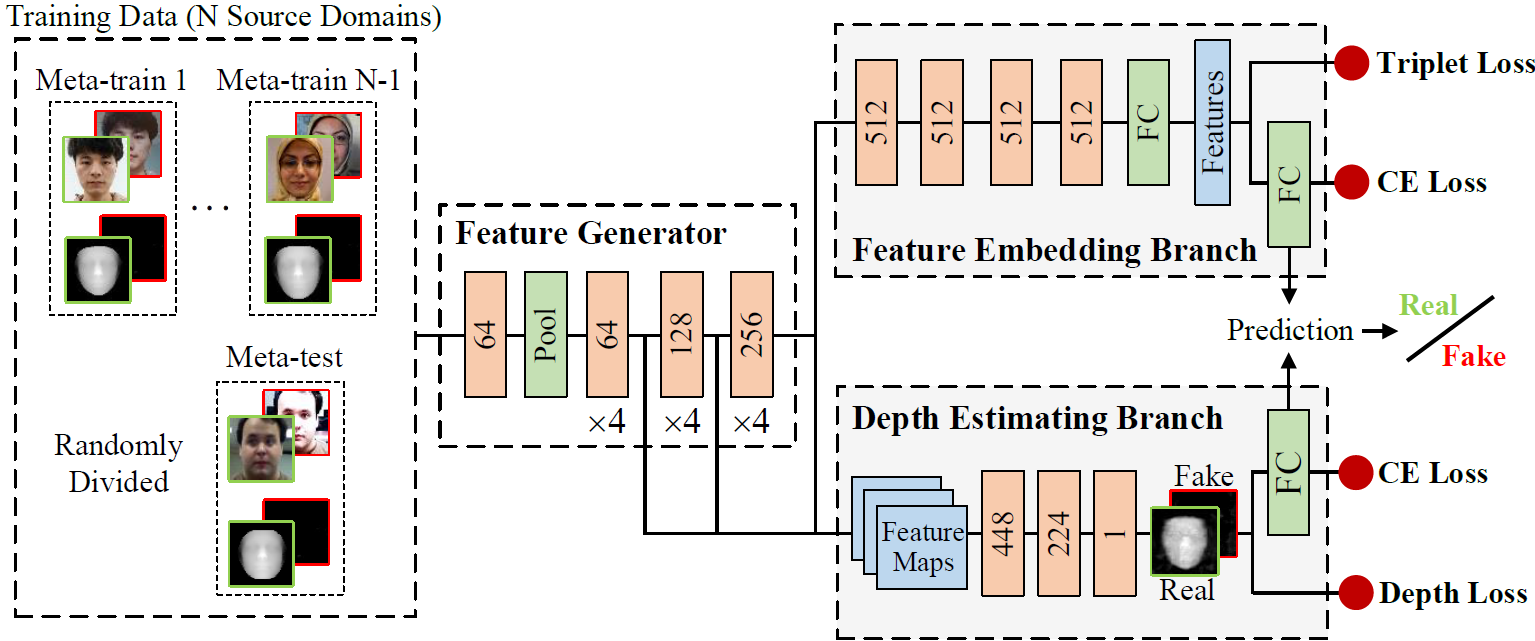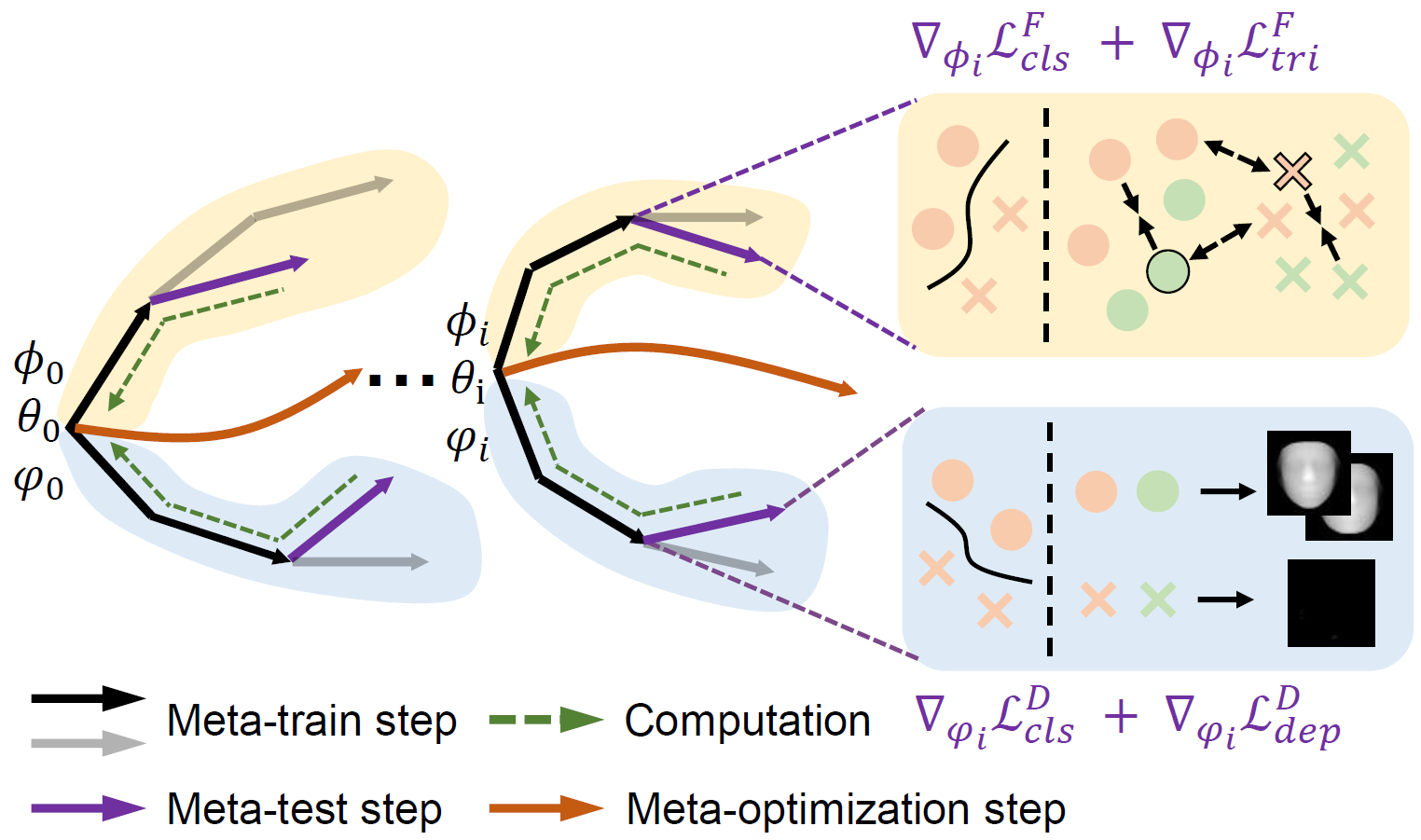Recently, one paper on cross-domain face anti-spoofing is accepted by the journal IEEE TIFS . The full name of IEEE TIFS is IEEE Transactions on Information Forensics and Security, which is a CCF-A journal on biometrics and information security with an impact factor of 7.178 announced in 2021. The paper information is as follows:
Yunpei Jia, Jie Zhang, Shiguang Shan, “Dual-Branch Meta-learning Network with Distribution Alignment for Face Anti-spoofing”, IEEE Transactions on Information Forensics and Security, 2021. (Accepted)
Existing face anti-spoofing (FAS) methods fail to generalize well to unseen domains with different data distribution from the training domains, due to the distribution discrepancies between various domains. To extract domain-invariant features for unseen domains, this work proposes a Dual-Branch Meta-learning Network (DBMNet) with distribution alignment for face anti-spoofing. Specifically, DBMNet consists of a feature embedding (FE) branch and a depth estimating (DE) branch for real and fake face discrimination. Each branch acts as a meta-learner and is optimized by step-adjusted meta-learning that can adaptively select the best number of meta-train steps. In order to mitigate distribution discrepancies between domains, we introduce two distribution alignment losses to directly regularize the two meta-learners, i.e., the triplet loss for FE branch and the depth loss for DE branch, respectively. Both of them are designed as part of the meta-train and meta-test objectives, which contribute to higher-order derivatives on the parameters during the meta-optimization for further seeking domain-invariant features. Extensive ablation studies and comparisons with the state-of-the-art methods show the effectiveness of our method for better generalization. The code is available at: https://github.com/taylover-pei/DBMNet-TIFS.


Overall, the main contributions of our work lie in three aspects:
1) We propose a novel dual-branch meta-learning network (DBMNet) for face anti-spoofing, where both branches are optimized by step-adjusted meta-learning separately, aiming to select the best number of meta-train steps for better generalization.
2) We introduce two distribution alignment losses to explicitly regularize the meta-leaner, which not only mitigate distribution discrepancies between domains but also contribute to higher-order derivatives on the parameters for further extracting domain-invariant features.
3) We make comprehensive comparisons with existing methods and achieve the state-of-the-art performance on six public face anti-spoofing databases as well as one general domain generalization PACS database.
Download:
